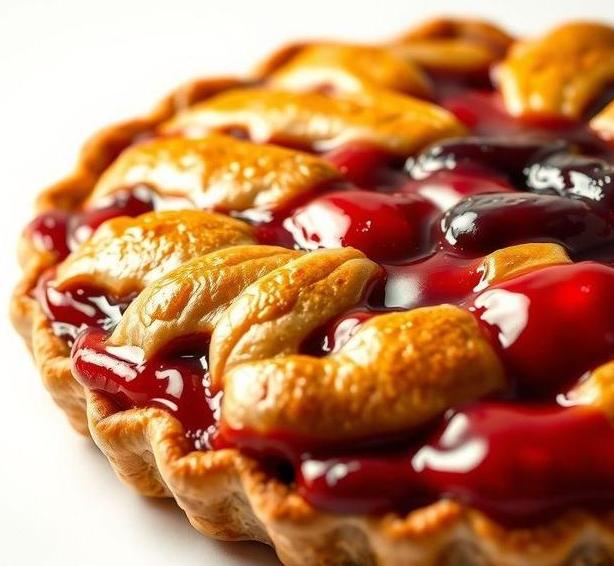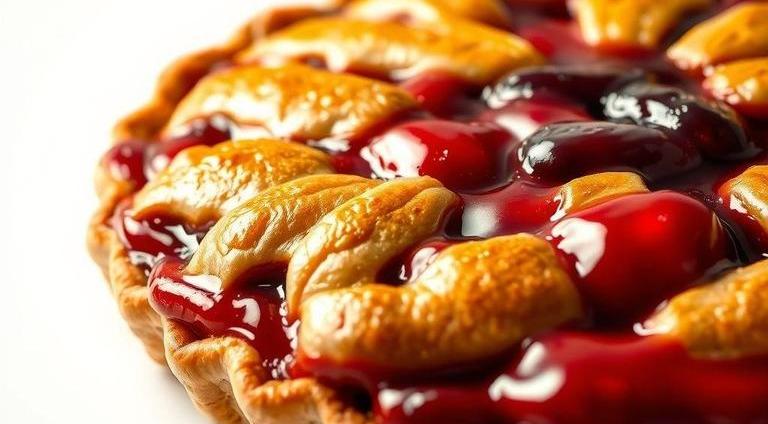Pie-whether it’s a homemade masterpiece or a store-bought delight-has a special place in our hearts and stomachs. From the comforting warmth of apple pie to the indulgent richness of chocolate cream, pies are versatile desserts that can be enjoyed year-round. But as with all food, there’s always that lingering question: How long can I keep it around before it goes bad? Can that tempting slice sitting on your counter be left too long, or will it last longer than you think?
When it comes to pies, their shelf life can vary greatly depending on the ingredients, storage methods, and whether they’re baked or unbaked. So, to help you navigate the world of pies, we’re diving into everything you need to know about their longevity, spoilage signs, and expert tips on keeping them fresh. Let’s get into it!
Can Pie Go Bad?
Absolutely! Like all perishable foods, pie has a shelf life, and it can go bad. The thing to remember is that pies are made from ingredients that can spoil-dairy, eggs, fruit fillings, and even the crust. While the crust itself may have a longer shelf life, the fillings are often what make pies more vulnerable to spoilage.
When left at room temperature for too long or stored improperly, pies can attract bacteria or mold, making them unsafe to eat. Even if it looks and smells fine, there can still be hidden bacteria or changes in the texture that signal spoilage. And with ingredients like whipped cream or custards, things get a little trickier.
Shelf Life For Pie

The shelf life of a pie depends largely on the type of pie you’re dealing with, whether it’s baked or unbaked, and how it’s stored. Here’s a breakdown of what you can expect for different types of pies:
Baked Pies
-
Fruit Pies (Apple, Cherry, Peach, Etc.)
- Room temperature: 1-2 days
- Refrigerated: 4-5 days
- Frozen: 6-8 months
- Fruit pies generally have a short shelf life when left out, thanks to the fruit filling that can ferment or grow mold. However, when refrigerated, they can last a bit longer, retaining their freshness.
-
Cream Pies (Chocolate Cream, Banana Cream, Etc.)
- Room temperature: 2-4 hours (NOT recommended to leave out for extended periods)
- Refrigerated: 2-3 days
- Frozen: 1-2 months
- These pies have dairy-based fillings, which makes them even more sensitive to temperature changes. It’s important to store these in the fridge promptly after serving to prevent spoilage.
-
Custard Pies (Pumpkin, Lemon Meringue, Etc.)
- Room temperature: 2 hours
- Refrigerated: 3-4 days
- Frozen: 1-2 months
- Custard pies, thanks to their egg content, require refrigeration right after they cool down. Leaving them at room temperature for too long can lead to bacterial growth, especially in pies like pumpkin.
Unbaked Pies
-
Fruit Pies (Unbaked)
- Refrigerated: 1-2 days
- Frozen: Up to 6 months
- Unbaked fruit pies can be kept in the fridge for a couple of days, and they freeze well too. Just remember that freezing might alter the texture of the crust slightly.
-
Custard Or Cream Pies (Unbaked)
- Refrigerated: 1-2 days
- Frozen: Not recommended to freeze uncooked custard pies, as freezing can affect the filling’s texture.
Common Signs Of Spoilage
No one wants to take a bite of a pie only to realize it’s gone bad. So, here are the most common signs to look out for when checking if your pie has gone off:
Off Smells
- Rancid or sour odor: If a pie starts to smell sour, like it’s gone bad or fermented, it’s a clear indication that bacteria or mold has begun to grow. Cream pies or custards with dairy are especially prone to this.
Mold Or Discoloration
- Visible mold growth: You might notice fuzzy spots or dark patches, especially on the filling or crust. These are clear signs of spoilage.
- Discolored fruit fillings: Fruit pies, especially ones with berries, can start to discolor and become mushy. If the filling looks darker or has an odd texture, it’s time to toss it.
Unpleasant Texture
- Slimy or watery filling: In fruit pies, the filling can start to separate, and in cream or custard pies, the filling can become overly runny or curdled. These textural changes signal the pie’s gone bad.
- Hard or soggy crust: If the crust has gone soft or tough, it may not be safe to eat, especially if the filling has leaked through.
Sour Taste
- If the pie tastes sour or has an unusual aftertaste, even a small bite, you should avoid eating more and toss it out. The flavor might be a sign of bacterial contamination.
How To Store Pie?

Proper storage can significantly extend the shelf life of your pie and help you get the most enjoyment out of it. The key is to consider the type of pie and the ingredients inside.
For Fruit Pies
- Short-Term Storage (Room Temp): Fruit pies can stay fresh at room temperature for up to 2 days. Just make sure to cover them loosely with a clean cloth or plastic wrap to prevent dust or bugs from getting into the pie.
-
Long-Term Storage (Fridge Or Freezer)
- If you want your fruit pie to last longer, pop it in the fridge for up to 5 days. For extended storage, freezing is your best bet. Wrap it tightly in plastic wrap or aluminum foil, and place it in an airtight container or freezer bag to preserve it for up to 6 months.
For Cream And Custard Pies
- Refrigeration is Key: Always store cream and custard pies in the fridge to keep them fresh. These pies are highly perishable, thanks to their dairy and egg-based fillings. Keep them in an airtight container or cover them well with plastic wrap.
- Avoid Freezing: Most cream and custard pies don’t freeze well due to the texture changes in the filling. They’re best enjoyed fresh.
For Unbaked Pies
- In the Fridge or Freezer: If you want to store an unbaked pie, keep it in the fridge for up to 2 days before baking. Alternatively, wrap it tightly and freeze it for up to 6 months. If frozen, bake the pie straight from the freezer (though baking times might need to be adjusted).
Expert Tips
Here are some tips from the pros that can help you preserve your pies and ensure they stay fresh as long as possible:
- Don’t Leave Pies Out Too Long: Always store pies with perishable fillings (custard, cream, etc.) in the fridge right away. Even fruit pies should be refrigerated after a couple of days if you plan on keeping them longer.
- Use Airtight Containers: Whether you’re refrigerating or freezing your pie, using airtight containers or wrapping the pie well in plastic wrap or aluminum foil helps lock in moisture and prevent freezer burn.
- Freeze Right After Baking: If you have leftover pie or want to save some for later, freezing the pie right after it’s baked helps maintain the quality. When ready to eat, just reheat in the oven.
- Label Freezer Pies: For easy organization, label frozen pies with the date they were baked. This helps you keep track of how long they’ve been stored.
- Check Pie Crusts for Softness: If your pie has a soft or soggy crust, it’s best to eat it sooner rather than later, as moisture from the filling can seep into the crust.
FAQs
Can Pie Go Bad If Left Out?
Yes, pies can go bad if left out at room temperature for an extended period of time. Generally, pies containing dairy or eggs, like custard and cream pies, should not be left out for more than two hours to prevent bacterial growth.
How Long Can A Pie Sit Out Before It Goes Bad?
A pie should not sit out for more than 2 hours. If the ambient temperature exceeds 90°F (32°C), the safe time is reduced to just 1 hour. After that, harmful bacteria can begin to grow.
How Can You Tell If A Pie Has Gone Bad?
Signs that a pie has gone bad include an off smell, mold growth, discoloration, or a slimy texture. For cream or custard pies, if they become too runny or the filling separates, it’s best to discard them.
Can Pie Spoil In The Fridge?
Yes, pies can spoil in the fridge, especially if they are not properly covered or stored. The general shelf life for refrigerated pies is 3-4 days. However, fruit pies may last slightly longer, while custard and cream pies should be eaten within 2 days.
Can You Freeze Pie To Prevent It From Going Bad?
Yes, freezing pie can extend its shelf life. Both fruit pies and some cream pies can be frozen for up to 2-3 months. Ensure the pie is well-wrapped in plastic wrap and then foil to prevent freezer burn.
What Happens If You Eat Bad Pie?
Eating bad pie can lead to foodborne illnesses such as food poisoning, with symptoms like nausea, vomiting, diarrhea, or stomach cramps. This is particularly a risk with pies that contain dairy or eggs.
How Should Pies Be Stored To Avoid Going Bad?
Pies should be stored in an airtight container or tightly wrapped in plastic wrap. Fruit pies can be stored at room temperature for up to two days, while custard or cream pies should always be refrigerated.
Can Store-bought Pies Go Bad?
Yes, store-bought pies can go bad, especially after the expiration date on the packaging. Even if they are not opened, once the pie is exposed to air or if it’s kept past its best-by date, it could spoil.
Does The Type Of Pie Affect How Long It Lasts?
Yes, the type of pie can affect its shelf life. Fruit pies may last longer than cream pies or custard pies because they lack dairy products. For instance, fruit pies can last 3-5 days in the fridge, while cream pies should be eaten within 1-2 days.
Can You Reheat A Pie That Has Gone Bad?
Reheating a pie that has gone bad will not make it safe to eat. Once a pie has spoiled, it’s best to discard it. Reheating can also alter the texture or flavor, making it unappetizing even if it’s safe.